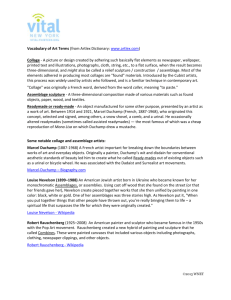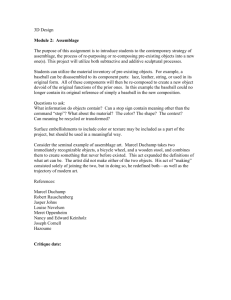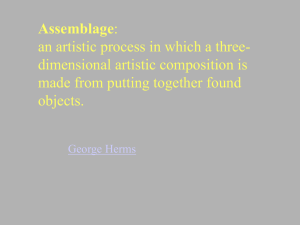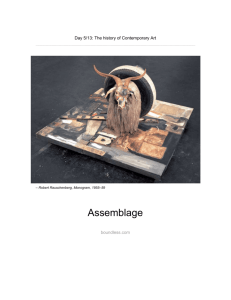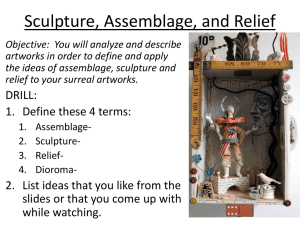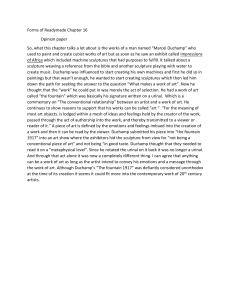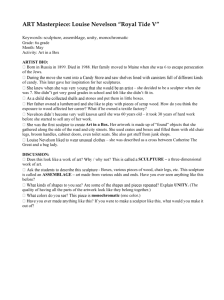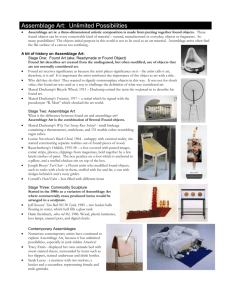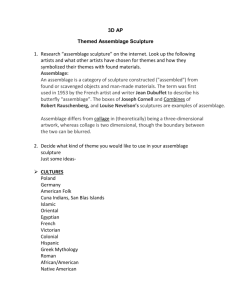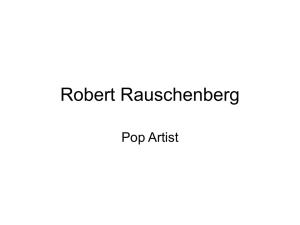Assemblage
advertisement
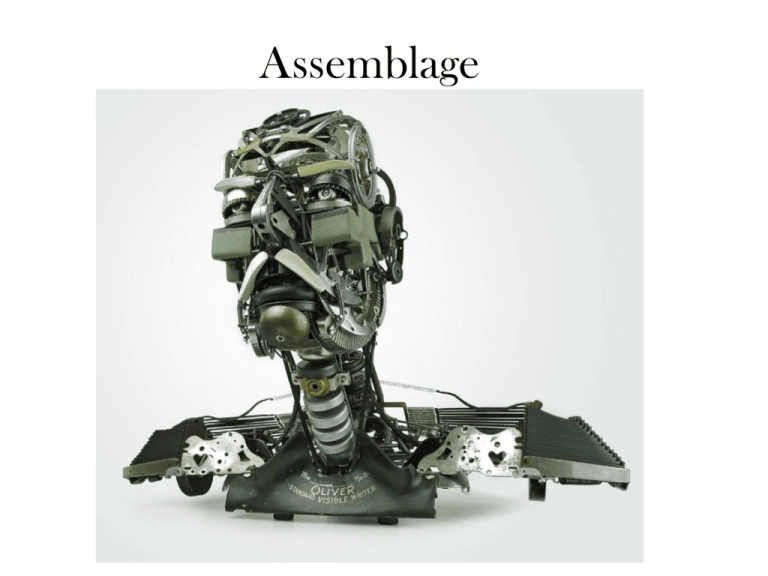
Assemblage Assemblage -is an artistic process in which a threedimensional artistic composition is made from putting together found objects. In 1916, French artist Marcel Duchamp shocked the world with his readymade art pieces like Bicycle Wheel. He challenged the definitions of traditional art. This paved the way for possibilities of using ordinary “found” objects in art. 3 3 Fountain • Duchamp’s most notorious readymade was a manufactured urinal entitled “Fountain”. Conceived for a show promoting avant-garde art, “Fountain” took advantage of the show’s lack of juried panels, which invariably excluded forward-looking artists. • Under a pseudonym, “R.Mutt,” Duchamp submitted “Fountain”. It was a prank, meant to taunt his avantgarde peers. For some of the show’s organizers this was too much—was the artist equating modern art with a toilet fixture? –and “Fountain” as ‘misplaced’ for the duration of the exhibition. It disappeared soon thereafter. Box in a Valise Louise Nevelson (19001988) was an abstract American sculptor. She constructed free-standing pieces, or assemblages, made from “found” materials. example by Louise Nevelson Assemblage in art is defined as a composition made from found objects: scraps, recycled, odds and ends of paper, cloth, wood, stone, or metal. Nevelson creates unity by painting this entire assemblage black. 8 Her autobiographical works symbolically address issues of marriage, motherhood, death, Jewish culture, memory and (although she resisted the label) feminism. Robert Rauschenberg “Monogram” One of Rauschenberg’s first and most famous combines was entitled “Monogram” (1959) and consisted of an unlikely set of materials: a stuffed angora goat, a tire, a police barrier, the heel of a shoe, a tennis ball, and paint. This pioneering altered the course of modern art. The idea of combining and of noticing combinations of objects and images has remained at the core of Rauschenberg’s work. Robert Rauschenberg Combines Dan Levin Joseph Cornell Often called “junk art”, assemblage is the process of creating sculpture using found objects. For this assignment you will use the additive process to create a non-representational self-portrait. This means that you will create a sculpture that symbolizes you but does not actually look like you. Keep the Elements and Principles of art in mind as you work. Consider what your Emphasis will be. How can you create Movement? Will your work be Harmonious or have a strong Contrast? Space and the use of Light are important! Make sure your are creating sculpture that is interesting from all sides (in the round). When you are collecting objects think about how you could attach them to each other. Questions to ask your self: Who am I as a person? •What are my beliefs? •What imagery would best describe me? •Will I use a container (box, vase etc.) •Will I add drawing or painting? (note this should be done only if it will enhance your piece, don’t just cover areas with paint without planning.) •Are there objects I can bring from home?

